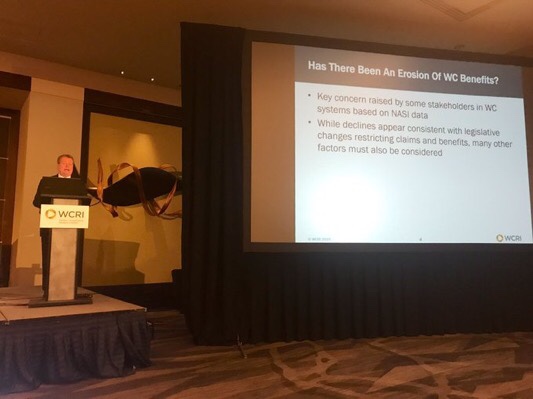Are Workers’ Compensation Benefits Declining?
At the 2019 WCRI Annual Conference, Dr. John Ruser, WCRI, talked about the variety of factors contributing to the trend of workers’ compensation benefits being a declining share of the payroll.
According to the National Academy of Social Insurance, the ratio of workers’ compensation benefits paid to total wages has dropped since the 1990s and is currently at it’s lowest level since the 1980’s. Some stakeholders have interpreted this to mean there has been an erosion of workers’ compensation benefits. However there are other factors that can also impact this.
- Since the late 1990s, there has been a sizable reduction in claim frequency. The number of new claims in 2014 as 55% less than in 1999.
- OSHA reportable injury rates are 1/3 of what they were 20 years ago.
- Declining claim frequency rates are tracking closely to declining BLS reporting rates. Meaning that there is a true reduction in accidents, not a decline in accident reporting.
- The data around declining injury rates is consistent with what is being seen in Europe.
- Declining accident rates are apparent in all industry sectors of the economy. It is not just a shift in the types of jobs to safer injuries.
- Declining accident rates are apparent across all injury events.
- Unquestionably, the workplace is much safer now than it was 20 years ago.
- Job accommodation of workers with restrictions has also increased significantly, shortening the time away from work following workplace accidents. This results in less indemnity benefits being paid.
The conclusion was, the decline of benefits relative to payroll is much more aligned with a reduction in claim frequency than an erosion in benefits.


